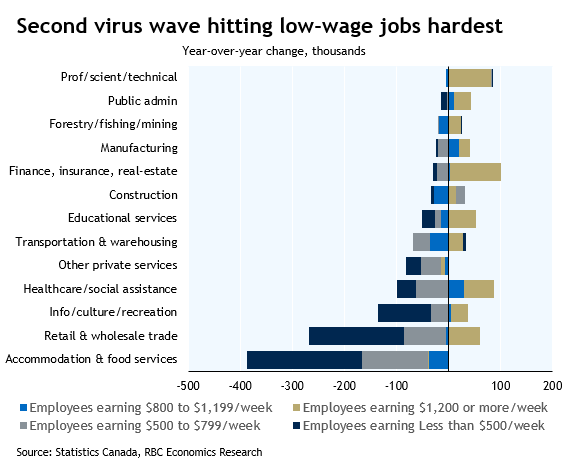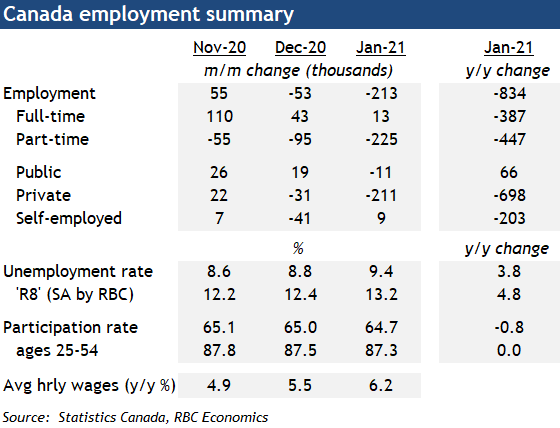- Employment plunged larger-than-expected 213k in January, the unemployment rate rose to 9.4%
- Job losses all part-time, and mostly in lower wage positions.
- Total hours worked still rose 0.9% in January, and government income supports will help offset near-term wage income losses
The already hard-hit accommodation & food services sector saw a fourth straight large decline in employment, with another 75k job losses in January bringing the 4-month total losses to more than 200k. But retail and wholesale employment also plunged 168k in January with non-essential store closures biting more sharply than in prior months.
Outside of those industries directly impacted by containment measures, job markets continued to improve in January. All job losses were in part-time work, with full-time employment up slightly. Indeed, overall hours worked actually increased 0.9% in January despite the huge drop in employment levels.
Job losses were again heavily concentrated at the bottom end of the wage distribution. Employment was down (a huge) 629k from a year ago among people previously making $500/week or less. A large proportion of those were in the accommodation & food sector, but layoffs have been broadly concentrated at the low end of the wage scale across industries. By contrast, employment among those making more than $1200 per week was up just over 500k from last year in January. A large share of people losing work from lower wage jobs is not good news, but both the expanded EI and CRB programs pay a minimum of $500/week. The former program has already paid out almost $15 billion since September, the latter almost $9 billion.
Slower virus spread has already prompted some gradual easing in containment measures, and that means that the second-wave job market pullback may already have ended in January. The extent that economic activity can fully recover is limited as long as the threat of the virus remains, particularly in ‘high-contact’ service-sector industries. But some gradual easing means that employment likely began to grow again as soon as February.














